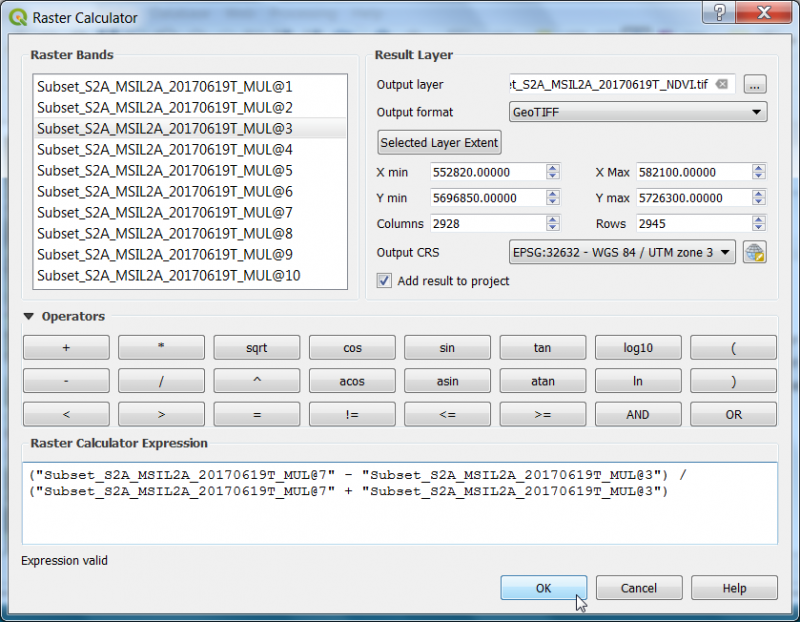Spectral indices
From AWF-Wiki
(Difference between revisions)
(→Vegetation index using the Raster Calculator) |
(→Vegetation index using the Raster Calculator) |
||
| Line 6: | Line 6: | ||
# A powerful normalization is realized by the ''normalized difference vegetation index'' that forms the basis of most vegetation indices $NDVI = (Nir - Red) / (Nir + Red)$. It can be implemented using {{tool|text=Raster Calculator}} as seen in the following screenshot: | # A powerful normalization is realized by the ''normalized difference vegetation index'' that forms the basis of most vegetation indices $NDVI = (Nir - Red) / (Nir + Red)$. It can be implemented using {{tool|text=Raster Calculator}} as seen in the following screenshot: | ||
[[File:Qgis_raster_calc_ndvi.png |800px]] | [[File:Qgis_raster_calc_ndvi.png |800px]] | ||
| + | # Define path and file name of the output layer. {{button|text=OK}}. | ||
== Spectral indices using OTB == | == Spectral indices using OTB == | ||
Revision as of 16:45, 8 November 2017
Vegetation index using the Raster Calculator
- Click the Add raster layer
 and select a multiband Sentinel-2 satellite image
and select a multiband Sentinel-2 satellite image
- Check the rank and spectral range of bands in the multiband file (e.g. see table Changing Raster Layer Style).
- After clicking Open, the raster layer appears in the QGIS canvas.
- Click Raster --> Raster calculator.
- A powerful normalization is realized by the normalized difference vegetation index that forms the basis of most vegetation indices $NDVI = (Nir - Red) / (Nir + Red)$. It can be implemented using Raster Calculator as seen in the following screenshot:
- Define path and file name of the output layer. OK.
